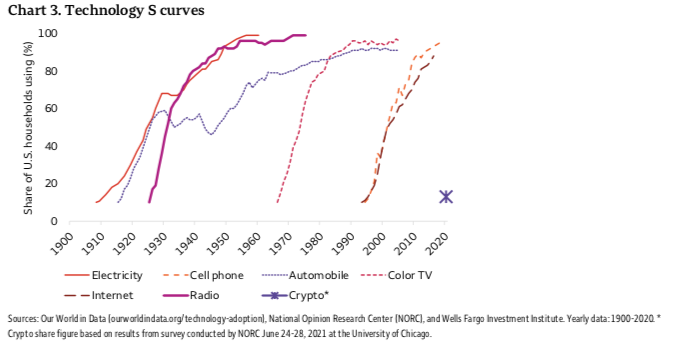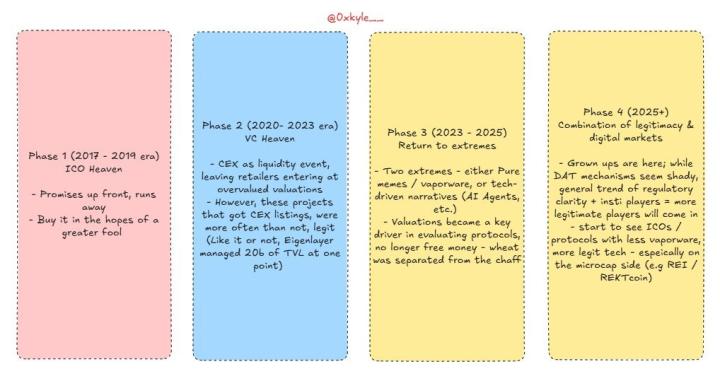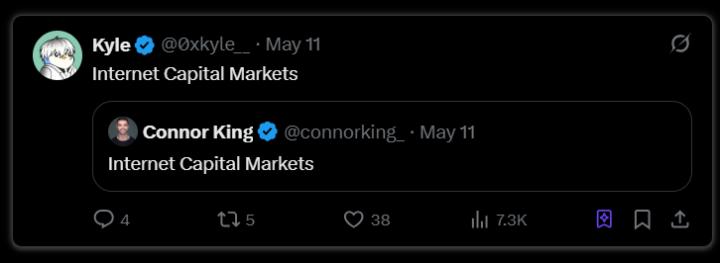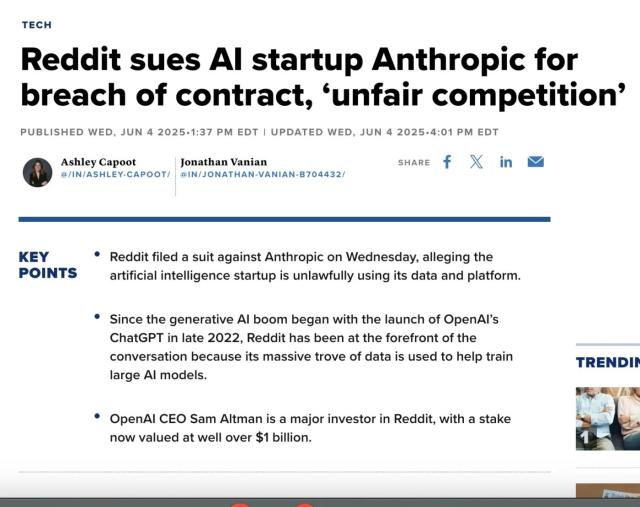We are at a critical moment of division in the crypto world. On one hand, there is an unprecedented institutional wave: Wall Street giants like BlackRock and Fidelity are embracing Bit with an unprecedented stance, with their spot ETF products absorbing billions of traditional capital like pumps; sovereign wealth funds and national pension funds are also quietly incorporating crypto assets into their massive investment portfolios.
This wave makes the narrative of "crypto becoming mainstream" sound incredibly real.
But on the other hand, the crypto world seems more distant than ever for ordinary people. Apart from price volatility and stories of a few speculators, it has almost no presence in daily life. The once-booming Non-Fungible Token market has fallen silent, and Web3 games that were once full of hope have failed to "break through". This huge temperature difference constitutes a core contradiction: on one side is a feast for financial elites, on the other side is a distant observation of the mainstream world. How should we understand this disconnection?
It is against this background that Visa executives, including CEO Alfred F. Kelly Jr., have made a profound judgment in multiple occasions: cryptocurrency is at a stage similar to "early e-commerce in the 90s", which is not yet fully understood by the masses, but its underlying technology and ecosystem are rapidly maturing, about to usher in a "super inflection point" of adoption curve.
Research from institutions like Wells Fargo provides data support for this analogy. Research reports show that the user adoption curve of cryptocurrency is stunningly similar to the early internet in the 1990s. Even though the internet was born in 1983, until 1995, less than 1% of the global population was using it. This proportion is remarkably similar to today's crypto users. History shows that disruptive technologies need to go through a long, slow, and confusing climbing period before their breakthrough.

However, this seemingly perfect analogy may obscure a deeper truth. History is not simply a repetition. The evolution script of today's crypto world is being completely rewritten by two variables that could not have been imagined at the time - the entry of financial "regular army" and the rise of artificial intelligence (AI). This is not just a historical replay, but an accelerated and fundamentally different evolution.
[The rest of the translation follows the same approach, maintaining the structure and translating all text while preserving any HTML tags.]In 1995, the internet solved connection problems between "people" and "information", and "people" and "goods". The essence of e-commerce was to digitize and online human society's commercial activities. The era we are entering will be about how "AI" and "AI" conduct economic collaboration. AI, as a new productivity, is creating digital content, code, design, and even scientific discoveries at an unprecedented speed. The value created by AI urgently needs a matching, native economic system.
Cryptography was born precisely for this purpose. Imagine a scenario: An AI designs a program and autonomously creates a unique artwork. It can mint this work as a Non-Fungible Token through a smart contract, thereby obtaining unique, verifiable ownership. Subsequently, another AI marketing program can discover this Non-Fungible Token and autonomously decide to pay a tiny cryptocurrency fee to promote it on social media.
If an AI procurement agent of a clothing brand is interested in this design, it can directly interact with the smart contract holding the Non-Fungible Token, automatically pay the licensing fee, and obtain permission to produce 1000 T-shirts. The entire process requires no human intervention, with value creation, rights confirmation, circulation, and distribution completed instantly on-chain.
This is not science fiction. Ethereum founder Vitalik has pointed out that the combination of AI and cryptography can solve each other's core problems: AI needs trustworthy rules and asset ownership, while the crypto world needs an autonomous "user". This symbiotic relationship is giving birth to entirely new application scenarios. For example, decentralized computing networks (like Akash Network) allow AI developers to rent global idle GPU computing power with cryptocurrency; while on-chain AI models attempt to build more transparent and censorship-resistant intelligent systems through token economic incentives.
The scale and speed of this AI-native economic activity may far exceed the sum of human commercial activities. What it needs is a global, low-friction, programmable value settlement layer. This is the core value of cryptography and the grand vision that the internet of the 90s could not achieve.
Are We Seeking the Next "Amazon" or "TCP/IP"?
Facing such a transformation, investors and builders often ask: Who will be the "Amazon" or "Google" of the crypto world?
This question itself might be limited by historical experience. Amazon's success was built on the platform economic model of Web 2.0 - a centralized company attracting massive users by providing excellent services, ultimately forming a winner-takes-all network effect. However, the spiritual core of the crypto world lies in "protocol" rather than "platform". Its goal is to create an open, neutral, permissionless public infrastructure like TCP/IP (the underlying communication protocol of the internet).
Therefore, future winners might not be a closed commercial empire, but an open ecosystem or a widely adopted underlying standard. We might see a Layer 2 network (like Arbitrum or Optimism) becoming the actual carrying layer for most applications through its excellent performance and developer ecosystem; or a cross-chain communication protocol (like LayerZero or Axelar) becoming the "value router" connecting all blockchains; or a decentralized identity (DID) standard becoming the unified pass for all users entering the digital world.
The commercial models of these "protocol" layer winners will be entirely different from Amazon's. They won't profit by charging high platform taxes, but by capturing the value growth of the entire ecosystem through their native tokens. They are more like public utilities such as city roads or water supply systems, rather than a dominant supermarket.
Of course, this doesn't mean the application layer has no opportunities. Great companies will still be born on these open protocols. But the key to their success will no longer be building closed moats, but how better to utilize these open protocols to create unique value for users.
Finally, returning to that quote: If you're willing to see the Visa CEO's judgment as a signal rather than a resolution, the more important question is "How do we turn the signal into practice". For enterprises, this is a comprehensive project from strategic alignment and compliance preparation to product implementation; for individual and institutional investors, it's about distinguishing between long-term perspective and short-term volatility, neither blindly following nor passively avoiding, but seeking on-chain use cases that can create value in the real economy.
History has given us two things: first, an image that lets us see possible trajectories; second, a lesson reminding us that the ultimate winners are often not the fastest speculators, but those who establish enduring, real-demand infrastructure and platforms that can span cycles. Today's cryptography is simultaneously writing two scripts - a lively market short story and a slowly forming infrastructure long story. If what Visa says is true, the next decade will be the critical decade when the latter accelerates to become mainstream.








